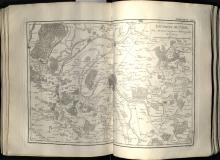Histoire vniverselle de la Chine
Jesuit writings about Chinese history and culture were not only influential works during the seventeenth and eighteenth centuries, they were also popular ones as well. Thus, when a work appeared in one language and sold well, other printers and publishers proceeded to have it translated and brought out new editions.
The Portuguese Jesuit, Alvaro Semedo (1585-1658), was sent back to Europe as procurator for the mission in 1637. He arrived in Lisbon in 1640, spent the better part of the next four years in Europe, before leaving Rome for China in 1644. Like Nicolas Trigault before him, his role in Europe was to promote the work of the China-based Jesuits as well as communicate information about China to Europe, not just to his Jesuit confrères but also more broadly as well.
He thus wrote a history of China, which was first published in Madrid in Portuguese, but was then rapidly translated into Spanish in the next year and printed under the title Imperio de la China: I cultura evangelica en èl, por los religios de la Compañia de Iesus. An Italian edition came out in 1643, and English edition in 1655 and this French edition was published in 1667.
The English edition indicates the content and purpose of the work, namely:
The history of that great and renowned monarchy of China. Wherein all the particular provinces are accurately described: as also the dispositions, manners, learning, lawes, militia, government, and religion of the people. Together with the traffick and commodities of that countrey.
The Burns Library has copies of this work in Spanish (bound in limp vellum), in Italian and the present French version, which has been fully digitized. It is significant to note that the French edition, being some twenty years after the publication date of the original Portuguese version, was also able to combine Semedo’s text with other, later, Jesuit writings. The publisher, Hierosme Prost of Lyon, added a work by another Jesuit procurator, the Italian Martino Martini, concerning the Tartar Wars, the forty years of upheaval that had affected the empire of China. Martini had likewise brought this work back with him, when he returned to Europe in 1653. Also worthy of note is that Prost was connected to the famous Parisian printers, the Cramoisy family, who sold the book on his behalf.






